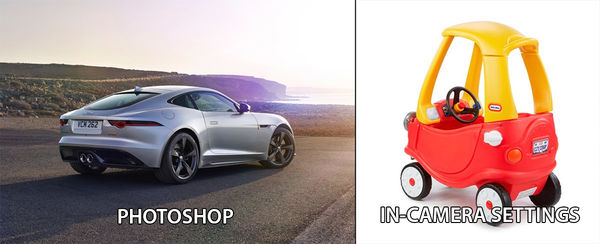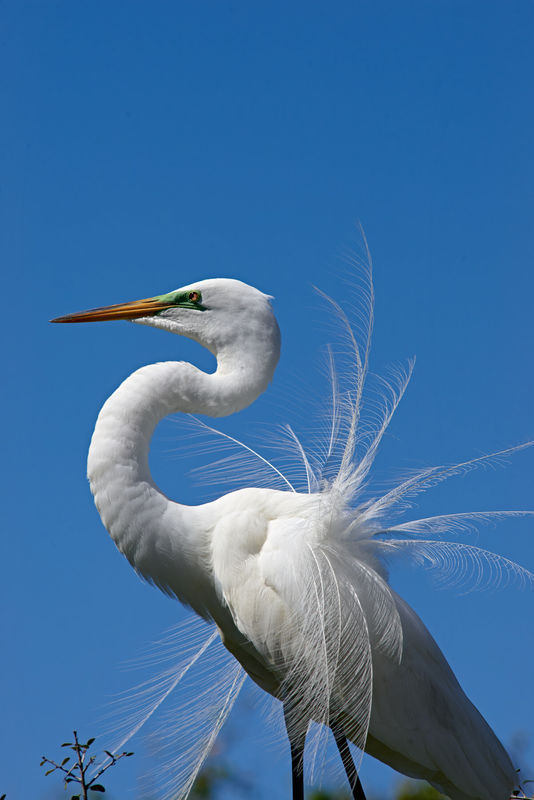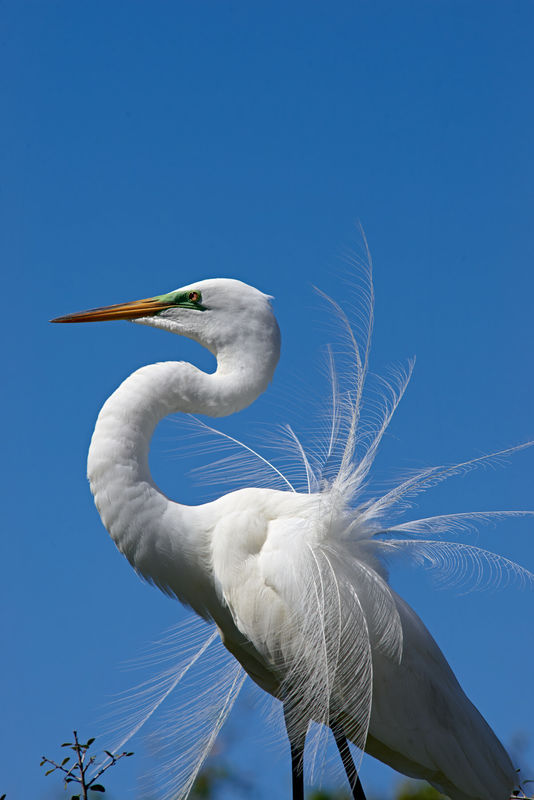Setting Some Things About JPG Format Straight
Feb 20, 2018 14:48:40 #
Todd, I have and have read that book a couple of times, along with using it for reference I don't know how many additional times.
From what I gained in that book, I used to use a hex editor to make changes to jpg files, just to see what would happen.
As I mentioned, it's easy to prove to oneself. Just find and download the free program windiff. If you're using a UNIX based system the diff function works similarly. It's not that difficult to prove it to oneself.
--Bob
From what I gained in that book, I used to use a hex editor to make changes to jpg files, just to see what would happen.
As I mentioned, it's easy to prove to oneself. Just find and download the free program windiff. If you're using a UNIX based system the diff function works similarly. It's not that difficult to prove it to oneself.
--Bob
Notorious T.O.D. wrote:
There is a book I had probably 20 or more years ago called Graphic File Formats, IIRC. It covered all sorts of information about both lossless and lossy file formats. I do not recall the author off hand. It was sort of the Bible of graphic file formats.
Best,
Todd Ferguson
Best,
Todd Ferguson
Feb 20, 2018 14:50:16 #
TheDman
Loc: USA
Kuzano wrote:
Since I rely on my images for income, I never shoot RAW!
SOOC, from a custom profile or a properly adjusted camera is where the money is!
JPEG only, with minimal PP!
SOOC, from a custom profile or a properly adjusted camera is where the money is!
JPEG only, with minimal PP!
Feb 20, 2018 15:19:44 #
Part of what confuses people is understanding what "open" means. When a program, an editor or a viewer, "opens" a file, it makes its own copy of the contents - normally it doesn't affect what is on the disc other than possibly asking the operating system to make a note that the file is in use. Thus, if the program just "closes" the file, everything is exactly as it was before the "open" .... there is no reason to "save" the file unless you have made changes. This us exactly the same as "opening" a book many times and {apart from possible wear to the page edges} not affect the book.
Feb 20, 2018 15:24:43 #
Very good additional information. Too many folks are adding to the confusion with convoluted file changes, save as, etc. The initial premise is that simply saving the file after opening, looking, and doing nothing to it will change the original file. Your additional clarification, I hope, helps just that much more. Thanks.
--Bob
--Bob
rehess wrote:
Part of what confuses people is understanding what... (show quote)
Feb 20, 2018 15:37:20 #
rmalarz wrote:
This is not going to be a "this format is bet... (show quote)
Good post Bob. Whether it clears up the misconceptions about .jpg or not is another thing. This topic seems to come up constantly. Here is a link I posted to someones question a week or so ago from petapixel. https://petapixel.com/2010/02/04/saving-jpeg-photos-hundreds-of-times/
As you said, opening, viewing, and closing will not degrade the jpg photo. But when opening a jpg and "Saving it", that will degrade the image over time because each time it is saved it is compressed, which results in detail and data being lost.
Would anyone open and save an image as many times as in the video link? Most likely not, but it just illustrates the damage that is being done each and every time the file is opened and saved, even if no editing was performed.
Feb 20, 2018 16:11:36 #
Mr palmer
Loc: Currently: Colorado, USA, Terra, Sol
Ok mods. You can close this thread. The topic has been completely destroyed. The village is good now.
Feb 20, 2018 16:31:29 #
Feb 20, 2018 16:31:52 #
tenny52
Loc: San Francisco
Bill_de wrote:
What programs that you use offer the 'save' option if you just open it? Usually they offer the 'save as' command, and if you don't at least change the name it tells you the file already exists.
--
--
I regularly use Faststone to view my pictures.
If I keep on viewing picture after picture, no change.
If I use the File-save as, then the ending file increases about 10Kb for my 3-5Mb jpgs.
Should there be any degrading, I can't tell.
Feb 20, 2018 16:43:44 #
rdrechsler
Loc: Channel Islands Harbor, CA
Very interesting information. As I'm just getting back into photography with two new cameras (Canon SX60HS and Nikon D3200) I'm already seeing the advantages of Raw over JPEG. Now I understand a little better. Thanks for posting, Dick
Feb 20, 2018 17:09:28 #
Ah, but is the modification reversible... That is the issue...too....
DaveC1 wrote:
I tend to to this with all image files. So my original file is say img0001.tif (or .jpg or whatever) my modification is saved as img0001r1.1.tif if I move to a different type of modification the saved file is img0001r2.1.tif so there is a trail of my work.
Feb 20, 2018 17:26:17 #
Bob,
I wrote CAD software for GM for about 6 years after I got out of college. I worked in the days of limited memory and even limited precision to some extent in calculations. Memory registers were so limited that I remember writing programs that what data resided in a specific register could be 5 or 6 different specific pieces of data depending upon where you were in the program code. Then there was the inter program communication where you might have 50 different programs talking with each other too. The files could get large and the instability in the hardware or operator error could lead to crashes and corrupted data files. While it was not generally my role we had several people who were very talented at reading octal dumps of the CAD data files and finding the corruption and often being able to link around the corruption and restore most of the work. Most of the data was simply linked elements that had a unique data definition. Line, arc, text, etc. and each element include a pointer to the previous element and the following element. A linked list of elements more or less to simplify. I moved on to solids modeling and 3D printing in the late 80s. Eventually after playing with AI for a while and working on the EV1 Electric car I migrated toward imaging and document management. That is where I really got into different graphic file formats and encountered the book. There are many interesting problems to solve especially in taking old paper documents and converting them to digital documents and trying to get everything to live with computer created documents in peace and harmony. Of course there is the whole base of mathematics to define and manipulate 3D objects in space and how they interact with one another. I tried to steer clear of the complex math as much as I could but you always knew it was lurking there just under the surface.
Best,
Todd
I wrote CAD software for GM for about 6 years after I got out of college. I worked in the days of limited memory and even limited precision to some extent in calculations. Memory registers were so limited that I remember writing programs that what data resided in a specific register could be 5 or 6 different specific pieces of data depending upon where you were in the program code. Then there was the inter program communication where you might have 50 different programs talking with each other too. The files could get large and the instability in the hardware or operator error could lead to crashes and corrupted data files. While it was not generally my role we had several people who were very talented at reading octal dumps of the CAD data files and finding the corruption and often being able to link around the corruption and restore most of the work. Most of the data was simply linked elements that had a unique data definition. Line, arc, text, etc. and each element include a pointer to the previous element and the following element. A linked list of elements more or less to simplify. I moved on to solids modeling and 3D printing in the late 80s. Eventually after playing with AI for a while and working on the EV1 Electric car I migrated toward imaging and document management. That is where I really got into different graphic file formats and encountered the book. There are many interesting problems to solve especially in taking old paper documents and converting them to digital documents and trying to get everything to live with computer created documents in peace and harmony. Of course there is the whole base of mathematics to define and manipulate 3D objects in space and how they interact with one another. I tried to steer clear of the complex math as much as I could but you always knew it was lurking there just under the surface.
Best,
Todd
rmalarz wrote:
Todd, I have and have read that book a couple of times, along with using it for reference I don't know how many additional times.
From what I gained in that book, I used to use a hex editor to make changes to jpg files, just to see what would happen.
As I mentioned, it's easy to prove to oneself. Just find and download the free program windiff. If you're using a UNIX based system the diff function works similarly. It's not that difficult to prove it to oneself.
--Bob
From what I gained in that book, I used to use a hex editor to make changes to jpg files, just to see what would happen.
As I mentioned, it's easy to prove to oneself. Just find and download the free program windiff. If you're using a UNIX based system the diff function works similarly. It's not that difficult to prove it to oneself.
--Bob
Feb 20, 2018 19:19:25 #
Notorious T.O.D. wrote:
Ah, but is the modification reversible... That is the issue...too....
Well that's the point. In the end of my little example I have three files. I have the original img0001.tif; I have img0001r1.1.tif and I have img0001r2.1.tif
So I have the original file, the first modification file, and I have the second modification file. There is no need to reverse anything I have left myself a trail detailing my work.
I'm sorry if I did not make myself clear.
Feb 20, 2018 20:00:19 #
bsprague wrote:
"It's that simple. Open, Look, Close, nothing. Open, Look, Save, file changes."
No argument with that at all. It is the technical, factual reality.
But artistically or creatively the picture gets less clear. I have stunning (to me!) JPEGs from small sensor cameras and stunning (to me!) RAWs, TIFFs and PSDs.
No argument with that at all. It is the technical, factual reality.
But artistically or creatively the picture gets less clear. I have stunning (to me!) JPEGs from small sensor cameras and stunning (to me!) RAWs, TIFFs and PSDs.
As do I, Bill!
I also have years of experience in a high volume pro portrait lab where we used an all-JPEG workflow to print millions of images. Images were:
1: saved as Large, Fine JPEGs at the cameras.
2: opened, converted to 12-bits, color adjusted, and saved as 8-bits (same size and low compression).
3: opened and retouched in Photoshop or KPARS (Kodak’s Professional Automatic Retouching Software), then saved at the same size, with less compression.
4: opened and rendered to portrait package “multiple” sheets, and saved as JPEGs into job queues for Noritsu mini-labs.
In blind tests, we could NOT see JPEG deterioration or artifacts in 8x10 test prints made at each stage.
Much angst is shed over JPEG compression artifacts, mosquito noise, jaggies, etc. but I haven’t seen issues with that in any lab workflow. A photo lab is not an Internet ad agency or a shady porn site.
YES, you WILL see that stuff if you compress small size (800x640 pixel dimensions) images at 40:1 for use on a web page, and then stupidly compress those same images more than once.
If you have 2000x3000 or more pixels, saved at maximum quality settings in camera, JPEGs withstand two or three more gentle (10:1 or less) compression saves, and still look good in prints viewed at 1 to 1.5 times their diagonal dimensions.
Feb 20, 2018 20:15:24 #
rmalarz wrote:
... If one opens a jpg file, looks at it, and saves it, it degrades. ...
It's easy to prove to yourself that this is not the case. All you need to do is open a JPEG, save it with 100% quality and then do a series of SaveAs steps, renaming the file each time.
I did that with the attached image and each one of them ended up with exactly the same number of bytes. If there had been any degradation, the total number of bytes might have changed. I compared the actual bytes of these two files and they were all identical throughout, even after four saves.
I only tested this with 100% JPEG quality.
Feb 20, 2018 21:54:18 #
selmslie wrote:
... I did that with the attached image and each one of them ended up with exactly the same number of bytes. If there had been any degradation, the total number of bytes might have changed. ....
To be fair, I repeated the test by:
1. opening the first image, saving it to image 2, closing it
2. opening image 2, saving it to image 3, closing it
3. opening image 3, saving it to image 4
The result was interesting.
The total bytes grew from 620k to 695k to 721k and finally 743k. The difference in file size was all in the file header but the actual image portion of the file did not change.
So there was no actual or visible image degradation. Only a drop in efficiency in the compression process as more information was added to the file header.
If you want to reply, then register here. Registration is free and your account is created instantly, so you can post right away.










